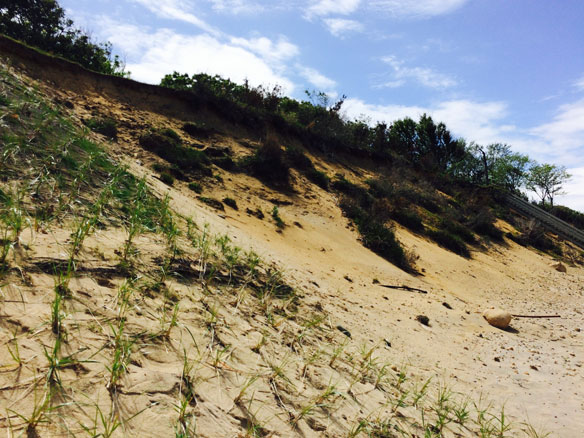
Coastal restoration, living shorelines. Photograph: © SAF — Coastal Care
Excerpts;
Marine restoration, rather than protection, might be the most cost-effective solution for coastal marine ecosystems suffering from human activities, a new study has found.
The study examined how to best benefit coastal marine ecosystems on limited conservation budgets, to help managers better understand the trade-offs…
Read Full Article; Science Daily (09-07-2017)
Rethinking Living Shorelines, By Orrin H. Pilkey, Rob Young, Norma Longo, and Andy Coburn;Program for the Study of Developed Shorelines / Western Carolina University, March 1, 2012, Nicholas School of the Environment, Duke University
In response to the detrimental environmental impacts caused by traditional erosion control structures, environmental groups, state and federal resource management agencies, now advocate an approach known as “Living Shorelines”that embraces the use of natural habitat elements such as indigenous vegetation, to stabilize and protect eroding shorelines.
Living shorelines a more natural approach to preventing coastal erosion, WNCT (05-18-2016)
Living Shorelines: Better Than Bulkheads, Coastal Review Online (02-08-2016)
More than 14,000 miles – 14 percent of continental U.S. coastline — has been armored with hardened structures. Hardened structures cause elevated rates of erosion on the shoreward side of the structure…
NOAA Study Finds Marshes, Reefs, Beaches Can Enhance Coastal Resilience, NOAA (04-29-2015)
NOAA study finds ‘living shorelines’ can lessen climate change’s effects, NOAA (12-22-2015)









